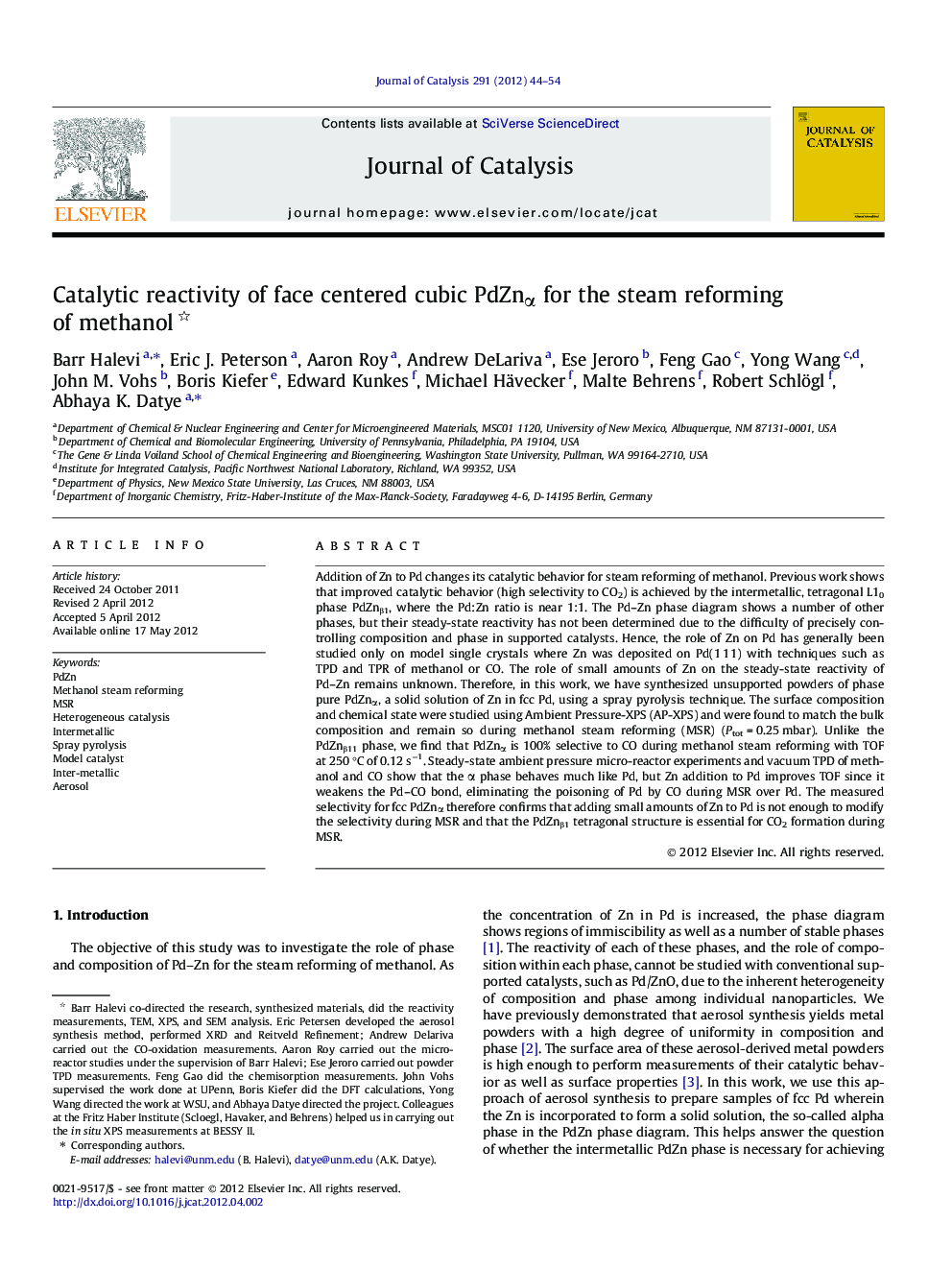| کد مقاله | کد نشریه | سال انتشار | مقاله انگلیسی | نسخه تمام متن |
|---|---|---|---|---|
| 61522 | 47586 | 2012 | 11 صفحه PDF | دانلود رایگان |

Addition of Zn to Pd changes its catalytic behavior for steam reforming of methanol. Previous work shows that improved catalytic behavior (high selectivity to CO2) is achieved by the intermetallic, tetragonal L10 phase PdZnβ1, where the Pd:Zn ratio is near 1:1. The Pd–Zn phase diagram shows a number of other phases, but their steady-state reactivity has not been determined due to the difficulty of precisely controlling composition and phase in supported catalysts. Hence, the role of Zn on Pd has generally been studied only on model single crystals where Zn was deposited on Pd(1 1 1) with techniques such as TPD and TPR of methanol or CO. The role of small amounts of Zn on the steady-state reactivity of Pd–Zn remains unknown. Therefore, in this work, we have synthesized unsupported powders of phase pure PdZnα, a solid solution of Zn in fcc Pd, using a spray pyrolysis technique. The surface composition and chemical state were studied using Ambient Pressure-XPS (AP-XPS) and were found to match the bulk composition and remain so during methanol steam reforming (MSR) (Ptot = 0.25 mbar). Unlike the PdZnβ11 phase, we find that PdZnα is 100% selective to CO during methanol steam reforming with TOF at 250 °C of 0.12 s−1. Steady-state ambient pressure micro-reactor experiments and vacuum TPD of methanol and CO show that the α phase behaves much like Pd, but Zn addition to Pd improves TOF since it weakens the Pd–CO bond, eliminating the poisoning of Pd by CO during MSR over Pd. The measured selectivity for fcc PdZnα therefore confirms that adding small amounts of Zn to Pd is not enough to modify the selectivity during MSR and that the PdZnβ1 tetragonal structure is essential for CO2 formation during MSR.
Intrinsic activity for phase pure Pd, PdZnα, and PdZnβ under MSR and CO-oxidation was established including Turnover Frequency (TOF) per surface palladium atom, selectivity, and activation energy. Figure optionsDownload high-quality image (139 K)Download as PowerPoint slideHighlights
► Addition of Zn to Pd changes its catalytic behavior for MSR and CO-oxidation.
► Phase pure fcc PdZnα is selective to CO under MSR with TOF at 250 °C of 0.12 s−1.
► Bulk composition of phase pure PdZn controls surface composition and reactivity.
► PdZnβ1 phase may stabilize formate so that it can be hydrolyzed by water to CO2.
Journal: Journal of Catalysis - Volume 291, July 2012, Pages 44–54